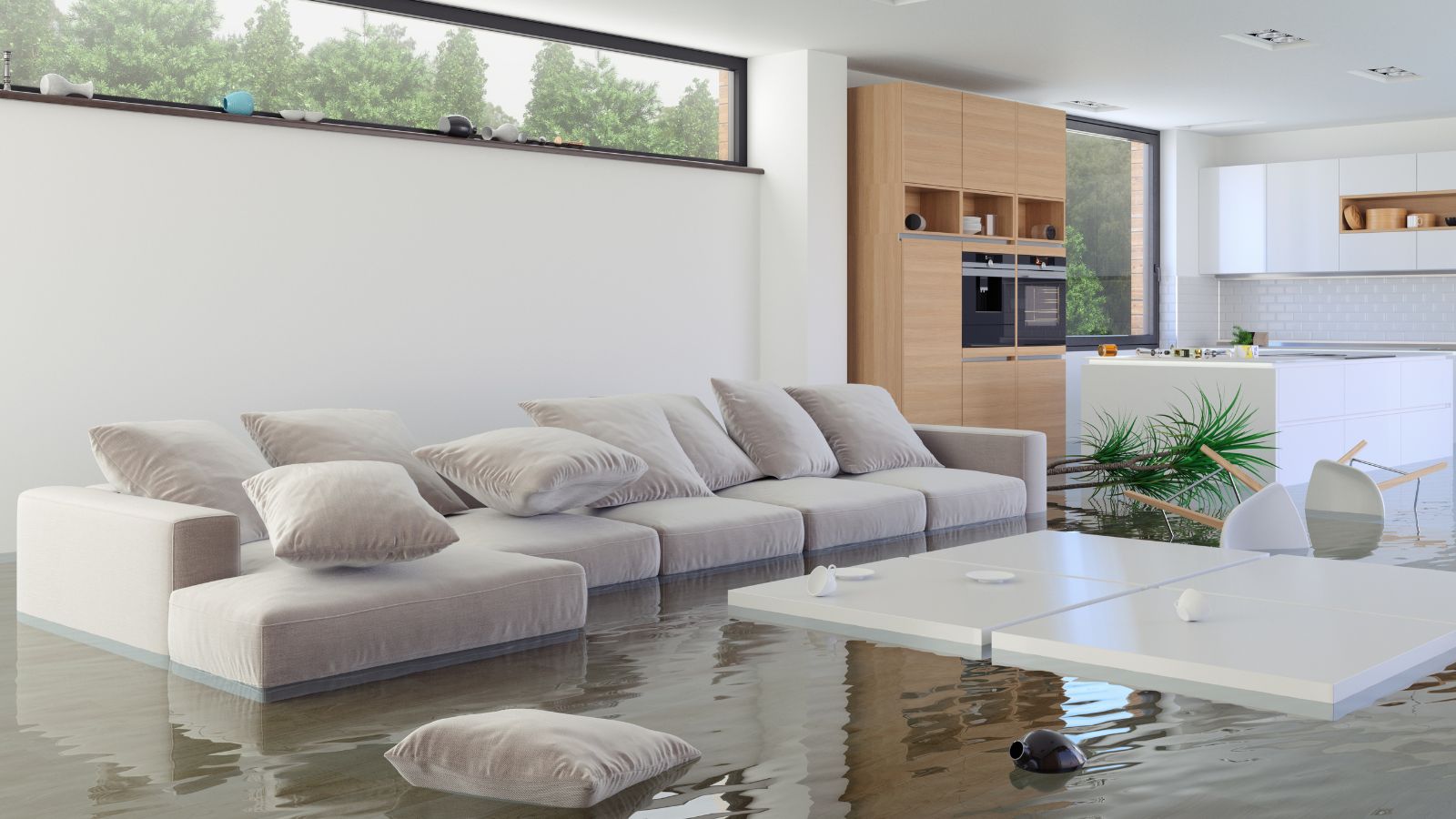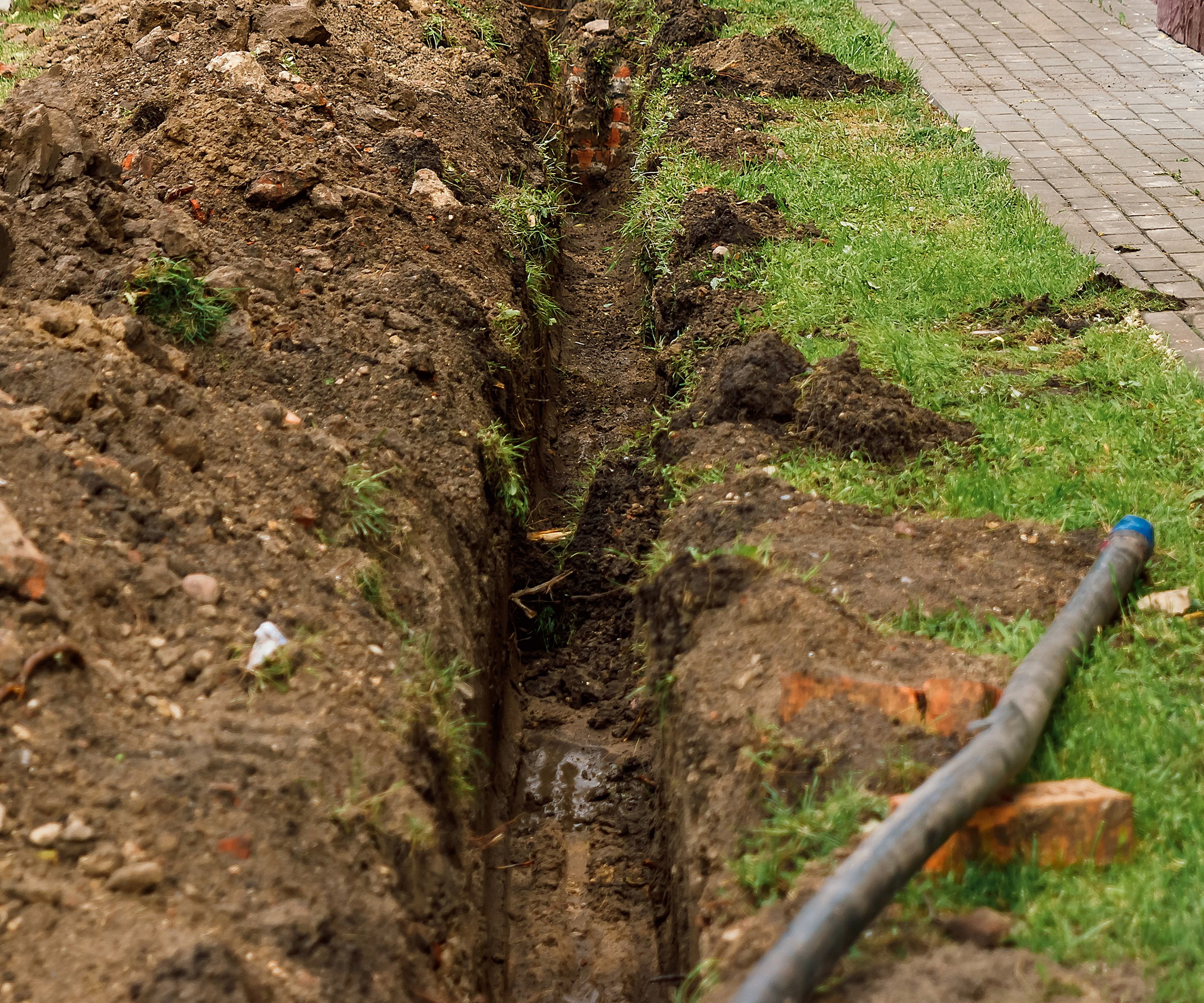Ways to protect your home from flooding – safeguard your space from storms
Be prepared for floods by adopting these pro-recommended measures inside and outside your home

- 1. Address grading
- 2. Focus on runoff
- 3. Think outdoor surfaces
- 4. Raise equipment
- 5. Focus on fuel tanks
- 6. Use flood vents and barriers
- 7. Install a sump pump
- 8. Pay attention to sewer lines
- 9. Seal walls
- 10. Protect indoor equipment
- 11. Deal with electrical components
- 12. Anchor indoor fuel tanks
- 13. Swap to flood-resistant materials
- 14. Look after valuables
- 15. Get insurance
- FAQs

Some 90% of natural disasters in the United States involve flooding, according to the Department of Homeland Security. And since where it can rain, it can flood, it pays to protect your home.
What’s worse is that flooding appears to be increasing, according to the department, so preparation for these events such as basement drainage solutions is well worthwhile to reduce the risk of damage.
We’ve put together advice from home professionals on the strategies you can take to protect your home from floods. Some are DIY and some require a professional but they’ll all help you prepare.
Ways to protect your home from flooding
It’s essential to protect your home from flooding not only because of the damage it can cause, but also to prevent the injuries and even fatalities that can arise. Be conscious, too, that flooding brings other risks and preventing mold after a flood is necessary to keep a home healthy.
These are the measures every owner can take to protect a home from the effects of flooding.
1. Address grading

To keep water away from your home, look to the landscaping. ‘Ensure proper grading away from the home so that excess water does not make its way towards your house on a regular basis,’ says professional landscaper Quinten O’Dea of Q&A Landscaping.
‘Build up the grade along the home and ensure there is a suitable low point for water to end up and drain away from the home. A French drain can be installed in this low point to help take water away and protect the home.’
Design expertise in your inbox – from inspiring decorating ideas and beautiful celebrity homes to practical gardening advice and shopping round-ups.
Employ garden drainage solutions, too, to control runoff and protect plants.
2. Focus on runoff
A little regular maintenance can pay dividends in extreme weather. ‘Keep gutters and downspouts clear of leaves, debris, and animal nesting to ensure proper water drainage,’ advises James Copeland, Director of Technical Services at Prism Specialities. ‘Installing gutter extensions will help to direct water away from the foundation of the structure.’

James Copeland is director of technical services at Prism Specialties, which specializes in the restoration of electronics, artwork, textiles, and documents.
3. Think outdoor surfaces

Boost the greenery to reduce water absorption around your home. Consider backyard landscaping and front yard landscaping that minimize impervious surfaces. ‘Planting native vegetation and creating natural barriers like berms or swales can help absorb excess water and reduce the risk of flooding,’ says James Copeland.
A rain garden, meanwhile, is designed to absorb excess rainwater and pervious (also known as permeable) pavement will reduce water runoff while still providing a surface to walk on.
4. Raise equipment
Pay attention to where utilities and service equipment are located. ‘Elevating outdoor equipment such as air conditioning compressors, heat pumps, etc is recommended,’ says James Copeland. Note that you need to check work conforms to local applicable building codes in your region, he adds.
5. Focus on fuel tanks
Follow FEMA’s recommendation and anchor outdoor fuel tanks. ‘Attach outdoor fuel tanks to a large concrete slab that weighs enough to resist the force of floodwaters, or install inexpensive ground anchors that are connected across the top of the tank with metal straps,’ it advises.
6. Use flood vents and barriers

To protect the inside of a home, there are both flood vents and barriers, which are known as wet and dry floodproofing options. ‘Wet floodproofing products (flood vents) allow floodwater to enter a building, usually in the crawlspace or garage, to prevent damage to the foundation or walls,’ explains Tom Little, the president of Floodproofing.com and a certified floodplain manager. ‘Dry floodproofing creates a barrier, usually across doors or windows, to keep floodwater from entering a building.’
Note that there are a variety of different barriers, both temporary and permanent. ‘Before choosing a specific application, it’s essential to assess your property, the level of flood risk, and your local regulations,’ advises James Copeland. ‘Consulting with professional or local authorities can help you determine the most effective and compliant flood protection measures for your home.’
7. Install a sump pump
A sump pump can be a defense against basement flooding. ‘Installing a sump pump can help remove water that accumulates in the basement and crawl spaces,’ explains James Copeland. ‘It is important to ensure that the pump is properly installed, regularly maintained, and has a battery backup in case of power failure.’
8. Pay attention to sewer lines
Take precautions against backup. ‘Install check valves in your sewer lines to prevent floodwater from backing up into the drains,’ says James Copeland. ‘This can help reduce the risk of sewage backup during a flood.’ Call in a licensed plumber to carry out the installation.
9. Seal walls
Look out for ways water could enter your home and stop it doing so. ‘Use waterproof sealants on basement walls and floors to prevent water seepage,’ says James Copeland.
10. Protect indoor equipment

It may be possible to raise some indoor equipment to protect it. ‘Some items, such as HVAC components and water heaters, can be mounted on walls or suspended from ceiling joists if the unit is designed for mounting and the walls or ceiling is strong enough to support their weight,’ says James Copeland.
‘Consult a licensed mechanical contractor to determine if this type of location works for you,’ he cautions.
11. Deal with electrical components
Raising electrical system components can keep them out of floodwaters. ‘Newly constructed or significantly upgraded structures located in flood-prone regions involve positioning all electrical components at or above the design flood elevation (DFE),’ explains James Copeland. ‘In the event of a flood, the electrical system and its components will remain unaffected by rising floodwaters.
‘Elevating the entire structure or critical components of the home can be a long-term solution. This may involve raising the foundation or elevating the living space above the expected flood level. You must consult your local code officials for any elevation restrictions in your area.’
Be sure to bring in a licensed electrician to make changes.
12. Anchor indoor fuel tanks
For a fuel tank that’s indoors, FEMA advises that, as for those outdoors, anchoring is crucial. This should be done by attaching it to a large concrete slab that weighs enough to resist the force of floodwaters, it says.
13. Swap to flood-resistant materials
Choosing different options for areas of the home that might be affected in the event of a severe storm can reduce damage.
‘The use of flood-resistant materials such as ceramic tile, concrete, and pressure-treated wood used for flooring, walls, and other areas prone to water exposure is recommended,’ says James Copeland.
14. Look after valuables

Consider the essential papers and more that you keep in your home. ‘Protect important documents by securing them in waterproof safes or storage boxes,’ says James Copeland. ‘Keep a copy of all documentation at a separate, secure location or consider keeping a digital copy of your records.’
15. Get insurance
Purchasing flood insurance is a recommended way to protect your home and belongings. Think you’re already covered? ‘Standard homeowners’ insurance typically does not cover flood damage, so a separate policy is typically necessary,’ says James Copeland.
Inventory your valuables, too. ‘Create and maintain a contents inventory file of electronics, appliances, textiles, artwork, and other valuable and collectible items. Include images of each item and artwork; be sure to include the name of the artist or maker, title, dimensions, media, and year. Include invoices and receipts for each item,’ he says.
FAQs
What can I used instead of sandbags for flooding?
There are several alternatives to sandbags when it comes to preventing water from entering a home.
‘Portable flood barriers create a barrier against rising waters and come in various forms such as inflatable, water-filled, and materials like metal or plastic,’ says James Copeland, director of technical services at Prism Specialities.
‘Self-inflating flood bags are lightweight, compact bags that can be stacked to form a barrier around the structure and automatically inflate when they are exposed to water. It is important to understand that some flood guards cannot contact salty water. Salt destroys the material and hinders the chemical reaction, rendering these inflatable water dams ineffective for residents in coastal regions.
Removable flood walls can be installed and removed as needed. They provide long-term protection because they are typically constructed of aluminum or steel. These panels also offer pneumatic seals to provide a reliable flood protection barrier.
Water-gate barriers are flexible, high-strength PVC self-inflating tubes that can be quickly deployed to create a barrier. They are portable and can conform to the shape of the landscape.
Flood shields or panels are typically made of metal or reinforced plastic; they are made to be installed over windows and doors for protection.’
Be ready for flooding. ‘Have an emergency action plan and kit with essential supplies, such as food, water, medicine, important documents, flashlights, and communication devices that are fully charged and backup batteries,’ recommends James Copeland, Director of Technical Services at Prism Specialities.

Sarah is a freelance journalist and editor. Previously executive editor of Ideal Home, she’s specialized in interiors, property and gardens for over 20 years, and covers interior design, house design, gardens, and cleaning and organizing a home for Homes & Gardens. She’s written for websites, including Houzz, Channel 4’s flagship website, 4Homes, and Future’s T3; national newspapers, including The Guardian; and magazines including Future’s Country Homes & Interiors, Homebuilding & Renovating, Period Living, and Style at Home, as well as House Beautiful, Good Homes, Grand Designs, Homes & Antiques, LandLove and The English Home among others. It’s no big surprise that she likes to put what she writes about into practice, and is a serial house renovator.